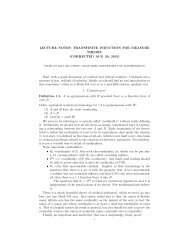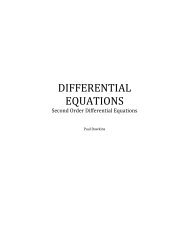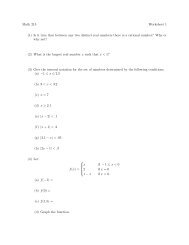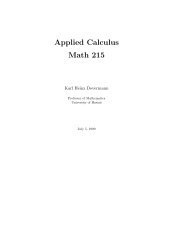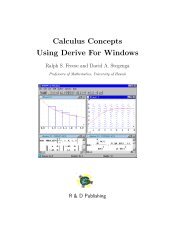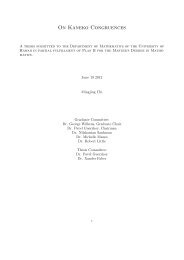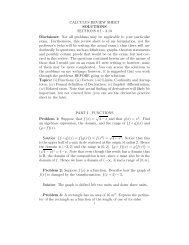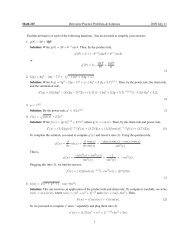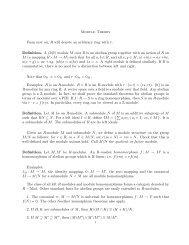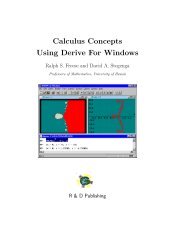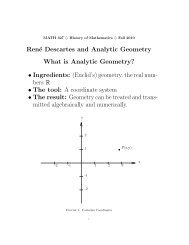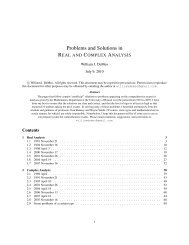Create successful ePaper yourself
Turn your PDF publications into a flip-book with our unique Google optimized e-Paper software.
Let α denote the angle between x and y, then<br />
cosα =<br />
〈x, y〉 1<br />
=<br />
||x|| · ||y|| 3 .<br />
Let us first orthogonalize the vectors, resulting in<br />
v1 = x and v2 = y −<br />
〈y, x〉 1<br />
x = y −<br />
〈x, x〉 3 x.<br />
The norms of these vectors are<br />
||v1|| = √ <br />
3 and ||v2|| = 〈y − 1<br />
<br />
1<br />
x, y − x〉 = 3 +<br />
3 3 1<br />
<br />
1 2<br />
− 2 · = 2<br />
3 3 3 .<br />
Normalizing the vectors v1 and v2 we find the orthonormal basis consisting<br />
of<br />
u1 = 1<br />
√ x and u2 =<br />
3 1<br />
<br />
3<br />
y −<br />
2 2<br />
1<br />
3 x<br />
<br />
.<br />
Problem 8. [15 points] Show, if the columns of C are linearly independent,<br />
then C t C is invertible.<br />
Solution: Suppose the size of C is m × n. Let x ∈ R n . Then Cx is a<br />
linear combination of the columns of C, and because the columns of C are<br />
linearly independent, the only solution of Cx = 0 is the trivial solution x = 0.<br />
Suppose C t C is singular, then there exists some non<strong>–</strong>zero vector x ∈ R n so<br />
that C t Cx = 0. It follows that x t C t Cx = (Cx) t Cx = 0, and this means that<br />
Cx = 0. This is a contradiction, and it follows that C t C is non<strong>–</strong>singular,<br />
hence invertible.<br />
6




